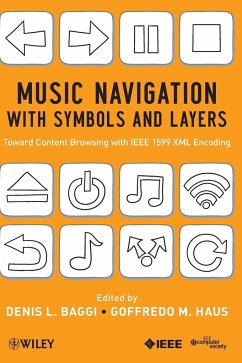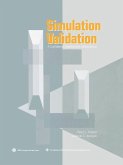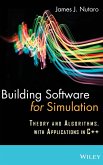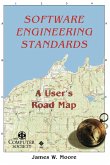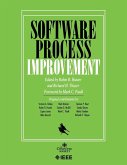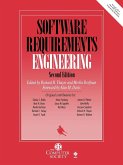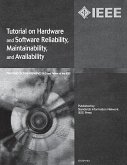Music is much more than listening to audio encoded in some unreadable binary format. It is, instead, an adventure similar to reading a book and entering its world, complete with a story, plot, sound, images, texts, and plenty of related data with, for instance, historical, scientific, literary, and musicological contents.
The first book-length explanation of applications for the new IEEE Standard 1599 IEEE Standard 1599 codes music in XML such that it is rendered in symbols readable by both humans and machines. It is a significant breakthrough over formats such as MP3s (which are only machine-readable) and is a valuable method of preserving and adding worth to older musical manuscripts and printed scores, because it retains the original written sheet music as a permanent image scan while at the same time allowing for multimedia layers (audio, a printed copy of the score, video of a performance, alternate takes/versions, etc.). Music Navigation with Symbols and Layers is the first book-length explanation of applications for the new IEEE Standard 1599, IEEE Recommended Practice for Defining a Commonly Acceptable Musical Application Using XML. Written and edited by the creators of the standard-and geared towards professionals working in all aspects of the electronic and computer music industry-this book: * Presents a manual that teaches how to encode music with IEEE 1599 * Considers a wide and genuinely global span of music, including classical, jazz, pop, opera, and even non-Western music such as African drum bands or Indian melodic improvisations * Posits that applications built with IEEE 1599 can move music from something we listen to to something we interact with and truly understand * Runs the gamut from commercial (iPods and other portable devices) to educational (tutorials on music theory) to historical and cultural (music preservation) Music Navigation with Symbols and Layers is a must-have reference for anyone wanting to create a computer application using IEEE 1599.
Hinweis: Dieser Artikel kann nur an eine deutsche Lieferadresse ausgeliefert werden.
The first book-length explanation of applications for the new IEEE Standard 1599 IEEE Standard 1599 codes music in XML such that it is rendered in symbols readable by both humans and machines. It is a significant breakthrough over formats such as MP3s (which are only machine-readable) and is a valuable method of preserving and adding worth to older musical manuscripts and printed scores, because it retains the original written sheet music as a permanent image scan while at the same time allowing for multimedia layers (audio, a printed copy of the score, video of a performance, alternate takes/versions, etc.). Music Navigation with Symbols and Layers is the first book-length explanation of applications for the new IEEE Standard 1599, IEEE Recommended Practice for Defining a Commonly Acceptable Musical Application Using XML. Written and edited by the creators of the standard-and geared towards professionals working in all aspects of the electronic and computer music industry-this book: * Presents a manual that teaches how to encode music with IEEE 1599 * Considers a wide and genuinely global span of music, including classical, jazz, pop, opera, and even non-Western music such as African drum bands or Indian melodic improvisations * Posits that applications built with IEEE 1599 can move music from something we listen to to something we interact with and truly understand * Runs the gamut from commercial (iPods and other portable devices) to educational (tutorials on music theory) to historical and cultural (music preservation) Music Navigation with Symbols and Layers is a must-have reference for anyone wanting to create a computer application using IEEE 1599.
Hinweis: Dieser Artikel kann nur an eine deutsche Lieferadresse ausgeliefert werden.

